Wednesday, October 11 - Part 3
I first heard of Zabriskie Point in 1970. At that time I was in my late teens and living in San Francisco with some of my family.
Then, "Zabriskie Point" referred to the movie. I know I saw the film, but remember little about it except it was some sort of anti-establishment movie, so was obligatory viewing at that time in my life.
Zabriskie Point is a 1970 film by Michelangelo Antonioni that depicts the U.S. counterculture movement of that time. It sympathetically tells the story of a young couple — an idealistic young secretary, and a militant radical — to put forward an anti-establishment message.
This cult film stars Mark Frechette and Daria Halprin, neither of whom had any previous acting experience. The screenplay was written by Antonioni, fellow Italian filmmaker Franco Rossetti, American playwright Sam Shepard, prolific screenwriter Tonino Guerra and Clare Peploe, wife of Bernardo Bertolucci. The film was the second of three English-language films that Antonioni had been contracted to direct for producer Carlo Ponti and to be distributed by MGM. The other two films were Blowup (1966) and The Passenger (1975).
Source: WikiPedia
Click on these photos for a higher resolution.
They will be slow to load with a dial-up connection.
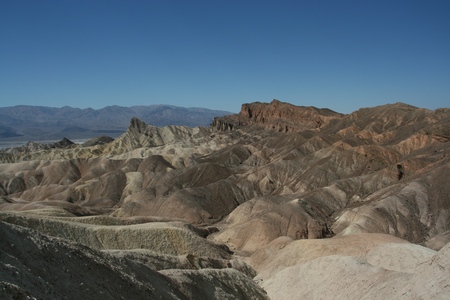
26 years passed and in all that time I doubt I gave Zabriskie Point another thought. But when I ended up in Death Valley in 1996 and saw the sign pointing to Zabriskie Point, it all came back to me, sorta.
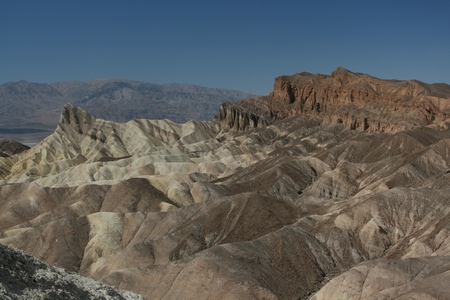
Then, as in 2001 and now I was taken aback by the beauty of the place. Although I only viewed the area from the overlook and out a car window it is still an amazing place to see. Perhaps one day I will allow the needed time to explore some of Death Valley on foot and off the beaten track.
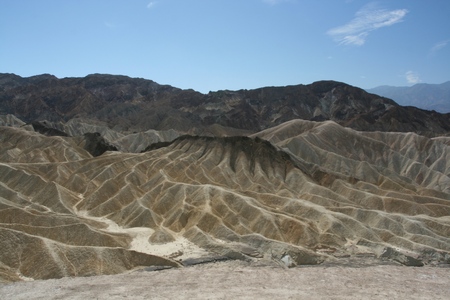
Zabriskie Point was named after Christian Brevoort Zabriskie a former vice president of Pacific Coast Borax Company.
Christian Brevoort Zabriskie was born October 16, 1864, at Fort Bridger, Wyoming Territory, where his father, E. B. Zabriskie was stationed. “Chris” attended various schools while growing up and at a very early age went to work as a telegrapher for the Virginia & Truckee Railroad at Carson City, Nevada.
He was too restless and ambitious to stay in one place for very long and soon moved to Candelaria, Nevada, (now a site) and worked for the Esmeralda County Bank. Being an active young man, one job was not enough to keep him occupied and he soon branched out into other ventures, one of which was a partnership with a local cabinet maker to establish a mortuary. Neither of the two knew how to embalm, but it wasn't considered necessary in a mining town – prompt burial was!
Zabriskie’s life took on new meaning in 1885 when F.M. “Borax” Smith hired him to supervise several hundred Chinese laborers at the Columbus March area of the Pacific Coast Borax Company near Candelaria. This was the beginning of a life-long career in the field of Borax. He ultimately became vice president and general manager of the company and served in that capacity for thirty-six years until his retirement in 1933. During this time, the Pacific Coast Borax Company had phased out most of its borax operations in the Candelaria vicinity but had moved on to greater production in the Death Valley area.
Source: LetsGoSeeIt.com
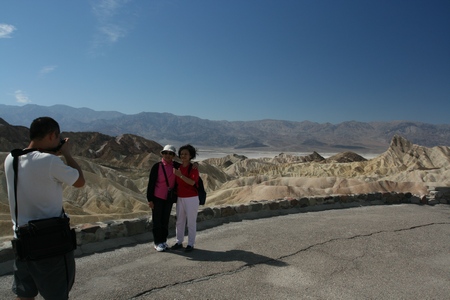
Great place for a photo to take back home to Japan.
This view point used to be the parking area as well. However, a much larger place to park has been developed a short walk from here making for a very spacious and car free place to enjoy the views.
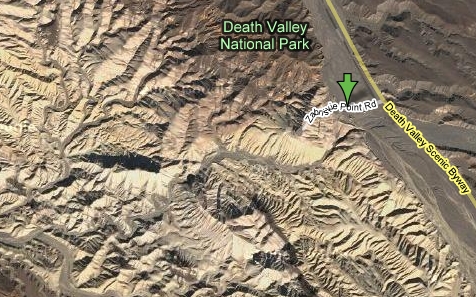
Source: © Google Maps
This digital terrain model gives a good idea of what you would see from Zabriskie Point.
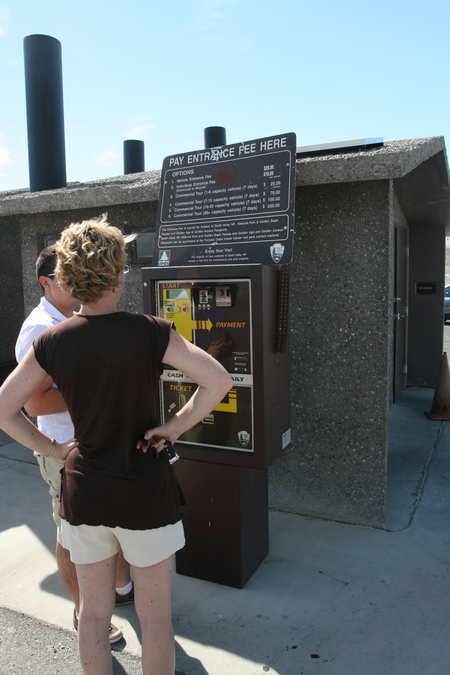
Contemporary Highway Robbery.
These two French tourists were looking quizzically at this "self-serve" fee station and obviously were not sure what to do. The women saw me taking the picture and asked me if I could explain a word to them. The word was "waived". As in "The Entrance Fee is waived for holders of Death Valley NP, National Park and Golden Age & Golden Eagle Passes".
They had purchased a Golden Eagle Pass so I told then they did not have to pay and attempted to explain what waived meant. They nodded understandingly and were on their way. Considering the huge number of ESL tourists, this, and other National Parks see on annual basis, I find it hard to understand why important information is not displayed in several of the most common languages. Not very helpful.
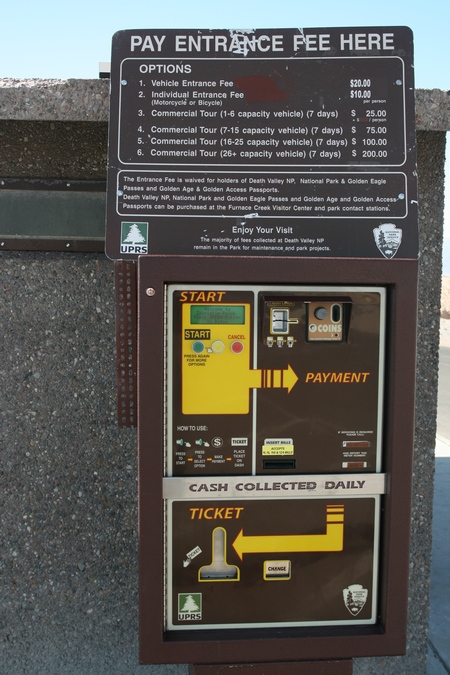
In keeping with ongoing reductions in services the NPS is now using these unfriendly and impersonal automated fee stations. This is only necessary because of historic and chronic under funding of the NPS and federally managed outdoor recreation in general.
This under funding problem becomes crystal clear when you see the rationale for Fee Demo areas:
About the Recreational Fee Demonstration Program
With the signing of the FY 2005 Appropriations Act, the Federal Lands Recreation Enhancement Act (FLREA) replaced the Recreational Fee Demonstration and National Park Pass authorities.
The Recreational Fee Demonstration Program (Fee Demo) was instituted in 1997 by the FY 1996 Omnibus Consolidated Rescissions and Appropriations Act. Subsequent appropriations language extended this authority to collect through December 31 2004. This “demonstration” program authorized 100% of the revenue generated by charging fees to be returned to the National Park Service, with 80% remaining at the site where it is collected and 20% to be used Servicewide at the Director's discretion.
The National Parks Omnibus Management Act of 1998 (P.L.105-391) authorized the development of the National Parks Pass (NPP) with retention of the revenues derived from its sale.
Congress authorized five federal land management agencies – the National Park Service, the Fish and Wildlife Service, the Bureau of Land Management, Bureau of Reclamation and the Forest Service - to charge fees to visitors.
The legislation encouraged:
- Public engagement in the creation of new fees and fee structures for recreational activities
- Reducing the backlog of maintenance to improve the quality of the visitor experience
- Habitat restoration directly related to wildlife dependent recreation
- Provide visitor information, interpretation and services
What I can never understand is why Outdoor Recreation is single out by the Feds for additional user fees on top of already paid taxes. It would seem fair to charge fees to non US Citizens, as they pay no US taxes. But to charge us additional fees is both unfair and regressive. Big surprise...
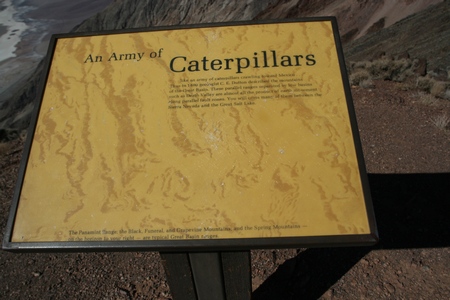
I continued on down US 190 for another 10 miles until I reached Dantes View Road. It was here that I had originally planned to park, unload my BikeFriday and pedal the 13 miles up to Dantes View. But, since my bike had been stolen I continued to the summit in my rental car.
This interpretive sign gives an idea of what mountains you are seeing and how they seem like "caterpillars crawling toward Mexico," in the words of C. E. Dutton, a geographer. From this point you can the Panamint Range: the Black, Funeral Gravevine and Spring Mountains.
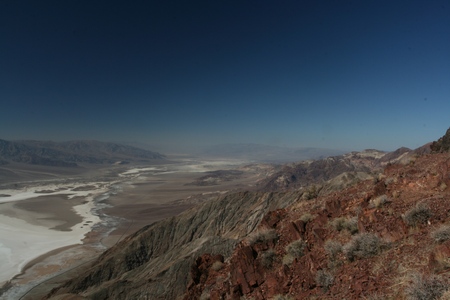
The views are spectacular and far reaching.
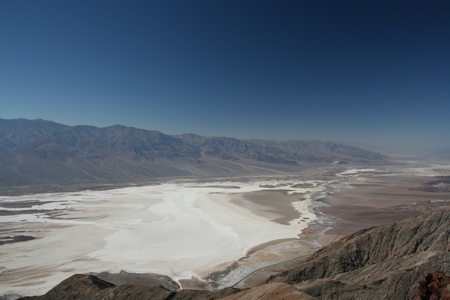
Salt and mineral deposits like the one shown here were the magnet which drew those hoping to make there fortune here in Death Valley.
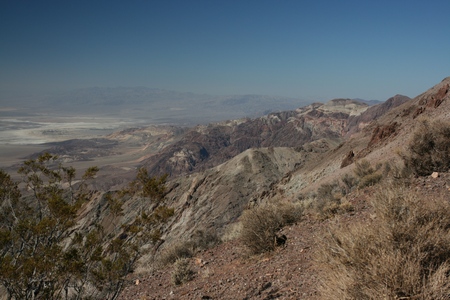
Vast, lonely solitude which appears untrammeled by humans.
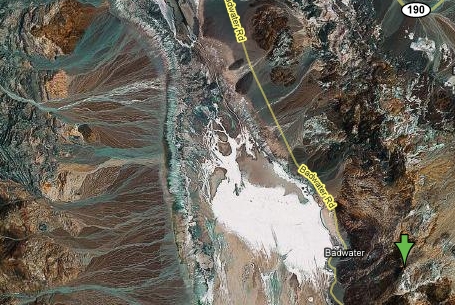
Source: © Google Maps
This satellite image of the Dantes View area shows the terrain clearly. It was interesting for me to see 100s of water channels coming down the Panamints. When all that water made it's way to the closed valley floor it evaporated and left the deposits of salts and minerals seen here.
I left Dantes View and had a leisurely drive back to Lone Pine. Although I had done little more that steer the car around all day, I was tuckered out and ready to get out of the hot sun for the rest of the day. I arrived back at Lone Pine around 5:00 and saw a beautiful snake on the way back.
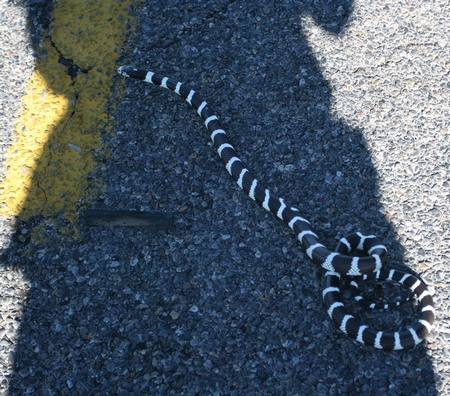
This is a California King Snake. I swerved just in time to not crush it, and fortunately, I just barely nipped its tail.
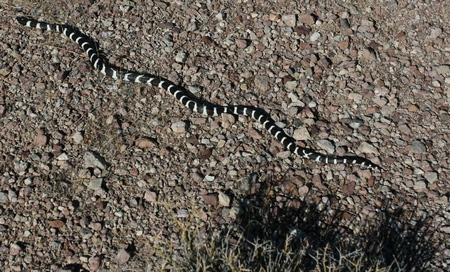
The snake moved quickly off the road when I approached it. I followed it off into the brush, hoping to get some close-ups. But, the combination of its speedy retreat, and my not knowing if it was venomous or not, resulted in only these photos.
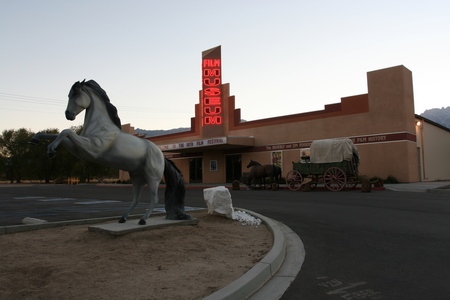
I arrived back in Lone Pine at just around 5:00, making for a full day in the Valley. Lone Pine has it's own film museum which is not surprising considering how important the film industry has been to the community over the decades.
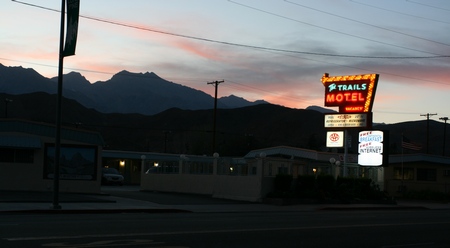
This is where I spent my three nights in Lone Pine. The rooms were average size and clean. There was wireless, a fridge and coffemaker. But rooms were over priced at $60/single.
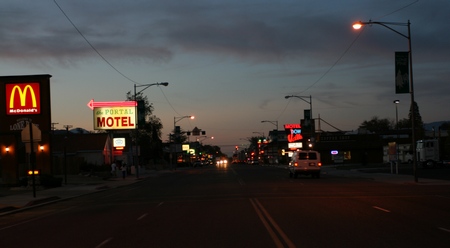
Downtown Lone Pine. Except for the constant, 24 hour procession of big trucks it was pretty quiet.
I will leave Lone Pine tomorrow and head north to start the trip back to the Bay Area.
